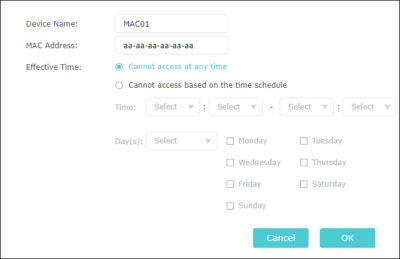

In addition, the EUI-64 numbering system originally encompassed both MAC-48 and EUI-48 identifiers by a simple translation mechanism. The IEEE now considers MAC-48 to be an obsolete term. MAC-48 was used to address hardware interfaces within existing 802-based networking applications EUI-48 is now used for 802-based networking and is also used to identify other devices and software, for example Bluetooth. The distinction between EUI-48 and MAC-48 identifiers is in name and application only. The IEEE encourages adoption of the more plentiful EUI-64 for non-Ethernet applications. The IEEE has a target lifetime of 100 years (until 2080) for applications using EUI-48 space and restricts applications accordingly. The IEEE manages allocation of MAC addresses, originally known as MAC-48 and which it now refers to as EUI-48 identifiers. This 48-bit address space contains potentially 2 48 (over 281 trillion) possible MAC addresses. The IEEE 802 MAC address originally comes from the Xerox Network Systems Ethernet addressing scheme. The b0 bit distinguishes multicast and unicast addressing and the b1 bit distinguishes universal and locally administered addressing. However, two NICs connected to two different networks can share the same MAC address. Network nodes with multiple network interfaces, such as routers and multilayer switches, must have a unique MAC address for each NIC in the same network. MAC addresses are formed according to the principles of two numbering spaces based on Extended Unique Identifiers (EUI) managed by the Institute of Electrical and Electronics Engineers (IEEE): EUI-48, which replaces the obsolete term MAC-48, and EUI-64. The address typically includes a manufacturer's organizationally unique identifier (OUI).

Many network interfaces, however, support changing their MAC address. Each address can be stored in hardware, such as the card's read-only memory, or by a firmware mechanism. MAC addresses are primarily assigned by device manufacturers, and are therefore often referred to as the burned-in address, or as an Ethernet hardware address, hardware address, or physical address. As typically represented, MAC addresses are recognizable as six groups of two hexadecimal digits, separated by hyphens, colons, or without a separator. Within the Open Systems Interconnection (OSI) network model, MAC addresses are used in the medium access control protocol sublayer of the data link layer. This use is common in most IEEE 802 networking technologies, including Ethernet, Wi-Fi, and Bluetooth. Our next iteration of karma actually has a lot more when it comes to usability and versatility.Label of a UMTS router with MAC addresses for LAN and WLAN modulesĪ media access control address ( MAC address) is a unique identifier assigned to a network interface controller (NIC) for use as a network address in communications within a network segment.

Maybe I am doing it in the wrong order, ie do I blacklist them before I start karma or afterwards ? Neither seems to work but has anyone else get this to sucessfully blacklist a MAC or SSID ?Īt the moment they are kept in RAM, not flash. Please help because currently this means when Karma is turned on I cannot use any personal WIFI device without it going through the Pineapple. I see from a previous answer that the Blacklists are stored in RAM so we would then have to add them every time and that in the future this will change, great, BUT, even when I try and add either a MAC address for my personal laptop (which I never want to connect through the pineapple) or a SSID that I want excluded from Karma, I cannot seem to stop the Laptop (Mavericks 10.9) seeing the fake SSID's that I excluded in the blackist, it also connects to said fake SSID without the lock symbol (so I know its not the real one !). I have confirmed that when connected to one of these SSID's my laptop DNS is set to the IP's that I would expect when routed through the Pineapple. I also have a MAC laptop that I use as my main machine and I dont ever want that connecting to the Pineapple so I added the MAC address of the Wireless card into the Pineapple GUI but I still seem to get connected to the "fake SSID's" given out by the Pineapple which are in the 'remembered WIFI list'. I have the latest firmware installed to a MkV and am running Karma MK5 together with TCPDUMP 1.3


 0 kommentar(er)
0 kommentar(er)
